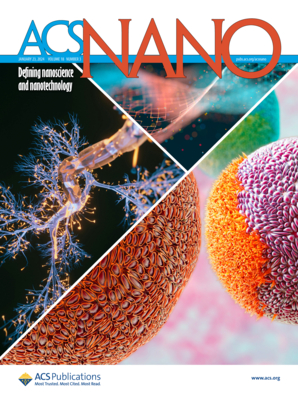Single (002)-Textured Zinc Anode via Nonepitaxial Electrodeposition with In Situ Texture Maintenance for Stable Aqueous Zinc Batteries
IF 15.8
1区 材料科学
Q1 CHEMISTRY, MULTIDISCIPLINARY
引用次数: 0
Abstract
Crystallography regulation of a zinc (Zn) metal substrate to expose more (002) textures holds great promise for stabilizing Zn anodes. However, significant challenges remain in directly constructing a single (002)-plane-textured Zn metal anode (S-(002)-Zn) and realizing a sustainable (002)-texture exposure in working batteries. Herein, we report an anion and cation coregulated nonepitaxial electrodeposition to fabricate S-(002)-Zn by introducing 1-ethyl-3-methylimidazolium iodide (EmimI) additives in low-cost ZnSO4 aqueous electrolyte (ZS). Mechanistic studies reveal that the cooperation of Emim+ and I– with oriented adsorption behaviors on Zn can synergistically boost the (100) plane growth, depress the (002) plane growth, and suppress H2 evolution, thus enabling compact S-(002)-Zn electrodeposition. Moreover, other similar organic iodides (e.g., dimethyl-imidazolium iodide and 1-propyl-3-methylimidazolium iodide) are applicable to this scalable electrodeposition. On the other hand, the as-designed ZS-EmimI electrolyte can be directly applied in working Zn batteries, thus effectively sustaining the smooth (002) texture of S-(002)-Zn and inhibiting HER during cycling. Consequently, the combination of single-(002)-texture and ZS-EmimI electrolyte endows the S-(002)-Zn anode with an ultralong lifespan over 10,100 h (>14 months) at 1 mAh cm–2 and superior deep-cycling stability under 88.0% utilization (25 mAh cm–2) over 500 h and assures the stable operation of full Zn batteries.

求助全文
约1分钟内获得全文
求助全文
来源期刊

ACS Nano
工程技术-材料科学:综合
CiteScore
26.00
自引率
4.10%
发文量
1627
审稿时长
1.7 months
期刊介绍:
ACS Nano, published monthly, serves as an international forum for comprehensive articles on nanoscience and nanotechnology research at the intersections of chemistry, biology, materials science, physics, and engineering. The journal fosters communication among scientists in these communities, facilitating collaboration, new research opportunities, and advancements through discoveries. ACS Nano covers synthesis, assembly, characterization, theory, and simulation of nanostructures, nanobiotechnology, nanofabrication, methods and tools for nanoscience and nanotechnology, and self- and directed-assembly. Alongside original research articles, it offers thorough reviews, perspectives on cutting-edge research, and discussions envisioning the future of nanoscience and nanotechnology.
 求助内容:
求助内容: 应助结果提醒方式:
应助结果提醒方式:


